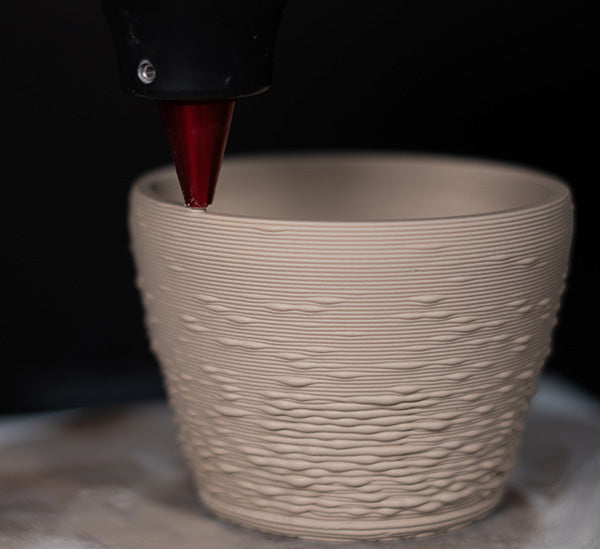
The Evolution of Clay 3D Printing: From Ancient Ceramics to Modern Innovation
Share
A Brief History of Traditional Ceramics
For thousands of years, clay has been at the heart of human civilization. The earliest known ceramic artifacts date back over 25,000 years, with the Venus of Dolní Věstonice, a small figurine discovered in the Czech Republic, being one of the oldest known fired clay objects. Pottery as a functional craft emerged around 10,000 BCE, as early humans began transitioning from nomadic lifestyles to settled agricultural communities.
Ancient cultures worldwide developed distinct ceramic traditions, from the fine porcelain of China to the terracotta warriors of the Qin Dynasty, the intricate amphorae of ancient Greece, and the richly decorated pottery of Native American tribes. Techniques evolved over time, incorporating wheel-throwing, glazing, and high-temperature firing processes, all of which allowed for greater durability and artistic expression.
The industrial revolution brought mechanization to ceramics manufacturing, enabling mass production. Yet, despite these advancements, the fundamental process remained largely the same—shaping, drying, and firing clay to create functional and artistic objects. It wasn’t until the 21st century that a technological breakthrough would reshape the world of ceramics: the emergence of 3D printing.
The Birth of Clay 3D Printing
Clay 3D printing emerged from a fusion of traditional ceramic techniques and additive manufacturing, a process that had been gaining traction in plastic and metal printing since the 1980s. The idea of printing clay layer by layer took inspiration from fused deposition modeling (FDM), where a material is extruded through a nozzle to build up an object. The key difference? Instead of plastic filament, the material of choice was soft, workable clay.
The first explorations into ceramic 3D printing began in the early 2000s, with researchers and artists experimenting with extrusion-based systems. By 2010, institutions like MIT and TU Delft had developed prototypes capable of printing clay with precision. These early machines often used pneumatic systems to push soft clay through a nozzle, creating intricate and repeatable designs that would be difficult—or even impossible—to achieve through traditional handcrafting methods.
The Evolution of Clay 3D Printing Technology
As clay 3D printing gained traction, innovators sought to refine the process. Some of the key developments included:
- More Precise Extrusion Systems: Advances in pneumatic and mechanical extrusion allowed for greater control over clay flow, improving print accuracy and consistency.
- Parametric and Generative Design: Software tools enabled the creation of complex, computationally generated forms, opening new creative possibilities in ceramic design.
- Hybridization with Traditional Methods: Many ceramic artists began combining 3D printing with hand-finishing techniques, marrying digital precision with human craftsmanship.
- Large-Scale Printing: Companies and research institutions developed printers capable of creating architectural-scale clay structures, exploring the potential of sustainable, locally sourced building materials.
By the late 2010s, commercial clay 3D printers became widely available, with brands like WASP, Lutum, and 3D Potter leading the charge. Today, artists, designers, and engineers use clay 3D printing to push the boundaries of what’s possible with ceramics.
The Future of Clay 3D Printing
Looking ahead, clay 3D printing is poised to revolutionize not only the world of ceramics but also industries such as architecture and sustainable manufacturing. With an increasing focus on biomaterials and eco-friendly construction techniques, printed clay structures could play a role in reducing waste and utilizing locally sourced materials for housing and infrastructure.
For artists and designers, the technology continues to offer new frontiers for experimentation—allowing for mass customization, unique surface textures, and hybrid production techniques that blend the digital with the handmade.
